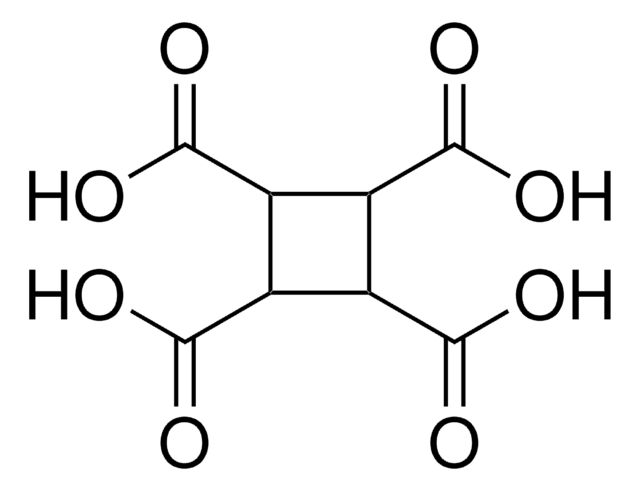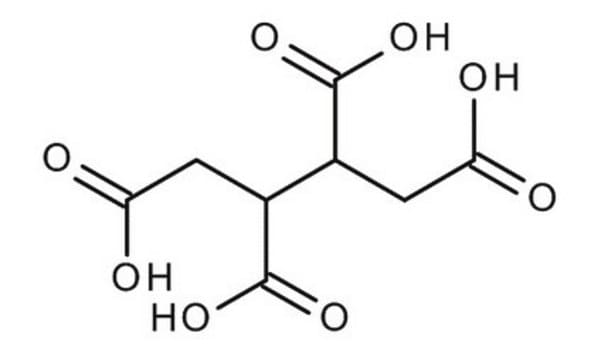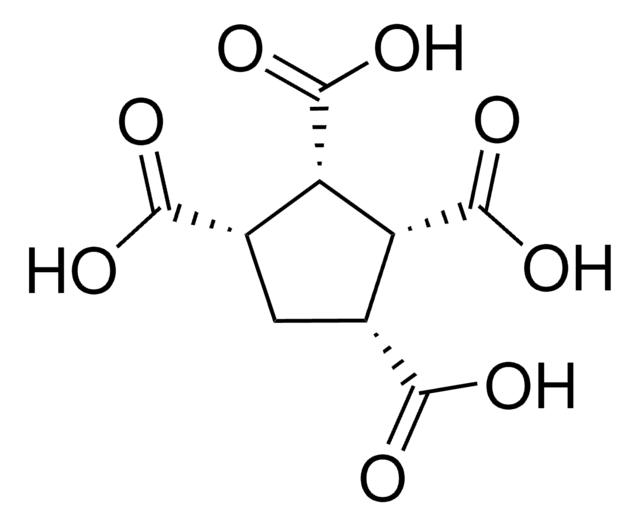About This Item
Recommended Products
Assay
99%
form
powder
mp
195-197 °C (dec.) (lit.)
SMILES string
OC(=O)CC(C(CC(O)=O)C(O)=O)C(O)=O
InChI
1S/C8H10O8/c9-5(10)1-3(7(13)14)4(8(15)16)2-6(11)12/h3-4H,1-2H2,(H,9,10)(H,11,12)(H,13,14)(H,15,16)
InChI key
GGAUUQHSCNMCAU-UHFFFAOYSA-N
Looking for similar products? Visit Product Comparison Guide
Related Categories
General description
Application
- To functionalize cotton fabric. BTCA-treated fabric shows improved anti-pilling, wrinkle resistance, and fire-retardant properties.
- To fabricate flexible, free-standing nanocellulose membranes. The cross-linking with BTCA improves water stability and ionic conductivity of membranes.
Signal Word
Warning
Hazard Statements
Precautionary Statements
Hazard Classifications
Acute Tox. 4 Oral - Eye Irrit. 2
Storage Class Code
11 - Combustible Solids
WGK
WGK 3
Flash Point(F)
Not applicable
Flash Point(C)
Not applicable
Personal Protective Equipment
Certificates of Analysis (COA)
Search for Certificates of Analysis (COA) by entering the products Lot/Batch Number. Lot and Batch Numbers can be found on a product’s label following the words ‘Lot’ or ‘Batch’.
Already Own This Product?
Find documentation for the products that you have recently purchased in the Document Library.
Our team of scientists has experience in all areas of research including Life Science, Material Science, Chemical Synthesis, Chromatography, Analytical and many others.
Contact Technical Service









